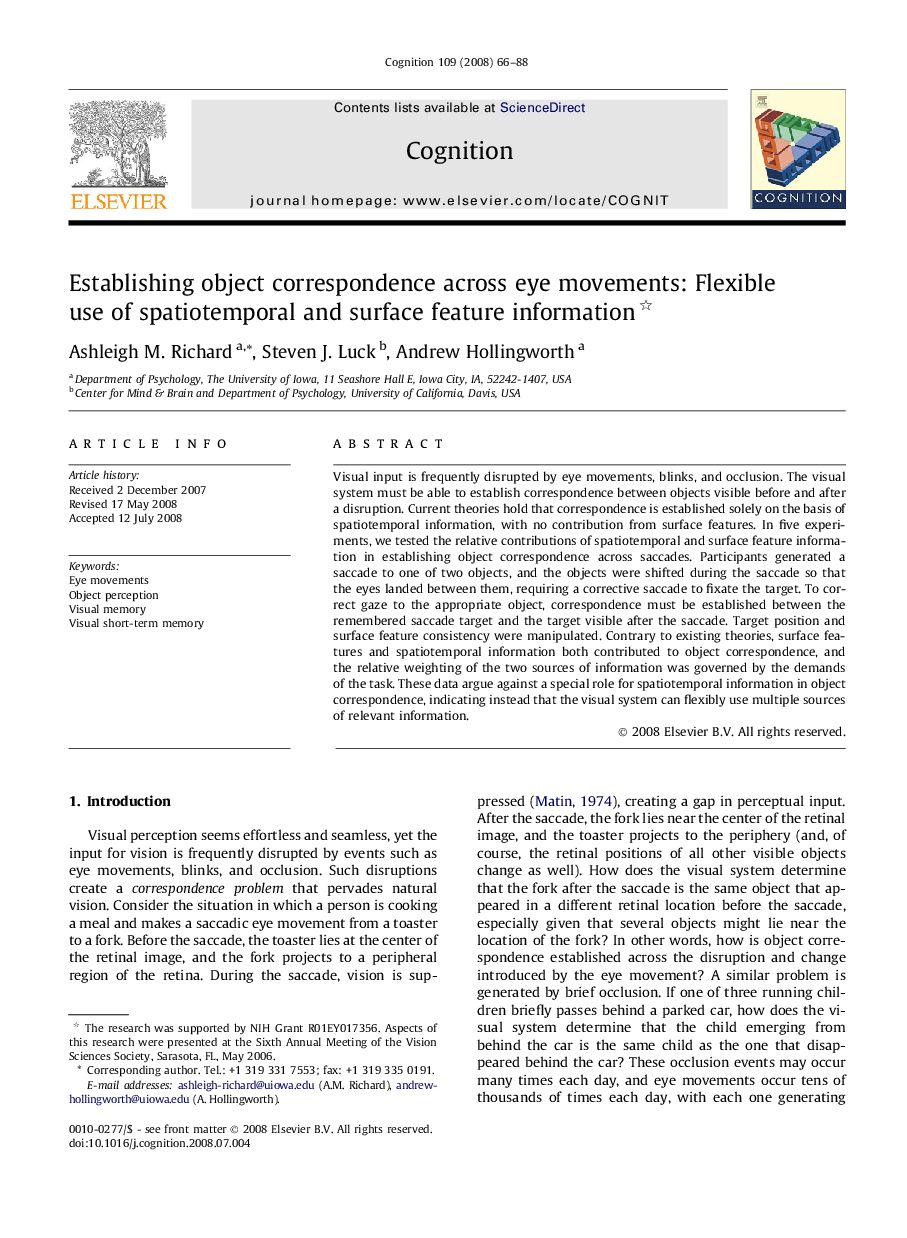| Article ID | Journal | Published Year | Pages | File Type |
|---|---|---|---|---|
| 10458031 | Cognition | 2008 | 23 Pages |
Abstract
Visual input is frequently disrupted by eye movements, blinks, and occlusion. The visual system must be able to establish correspondence between objects visible before and after a disruption. Current theories hold that correspondence is established solely on the basis of spatiotemporal information, with no contribution from surface features. In five experiments, we tested the relative contributions of spatiotemporal and surface feature information in establishing object correspondence across saccades. Participants generated a saccade to one of two objects, and the objects were shifted during the saccade so that the eyes landed between them, requiring a corrective saccade to fixate the target. To correct gaze to the appropriate object, correspondence must be established between the remembered saccade target and the target visible after the saccade. Target position and surface feature consistency were manipulated. Contrary to existing theories, surface features and spatiotemporal information both contributed to object correspondence, and the relative weighting of the two sources of information was governed by the demands of the task. These data argue against a special role for spatiotemporal information in object correspondence, indicating instead that the visual system can flexibly use multiple sources of relevant information.
Related Topics
Life Sciences
Neuroscience
Cognitive Neuroscience
Authors
Ashleigh M. Richard, Steven J. Luck, Andrew Hollingworth,
